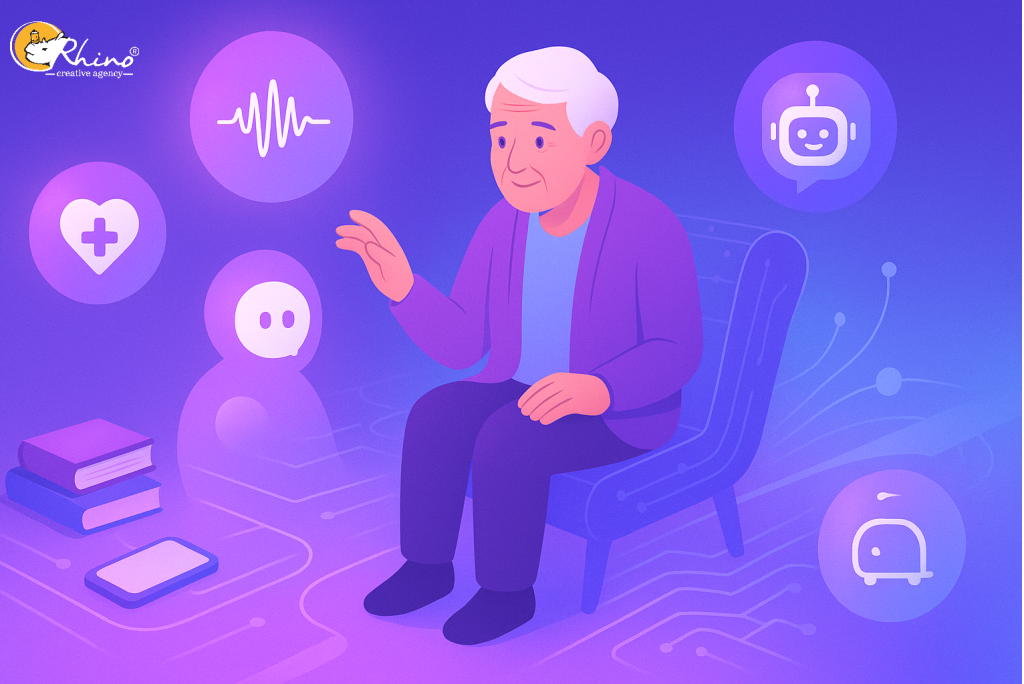How Seniors Navigate the Dizzying World of AI
Artificial Intelligence (AI) has quickly shifted from a futuristic concept to an everyday presence. Voice assistants answer questions, healthcare apps analyze symptoms, cars offer automated safety features, and even customer service is now often powered by chatbots. For seniors, who have lived through decades of technological revolutions—from the introduction of television to the rise of the internet—the sudden ubiquity of AI can feel both astonishing and overwhelming. Navigating this dizzying new world requires a blend of curiosity, caution, and adaptability.
One of the main challenges seniors face with AI is its invisibility. Unlike a microwave or a television, where the function is tangible and clear, AI often operates behind the scenes. When a banking app flags fraudulent charges or a streaming service recommends a movie, the “intelligence” at work is hidden in layers of algorithms. For seniors unfamiliar with data-driven technologies, this opacity can breed confusion and mistrust. Many express concerns about privacy, manipulation, or simply not understanding how or why a machine can “know” so much about them.
Yet, despite initial hesitation, seniors are increasingly finding meaningful ways to engage with AI. Voice-activated devices such as Amazon’s Alexa or Apple’s Siri are often the most accessible entry point. For individuals with mobility or vision challenges, the ability to use natural speech to set reminders, play music, or control home appliances is both empowering and liberating. Healthcare is another area where seniors benefit directly: AI-powered monitoring tools can track vital signs, remind patients to take medication, and even alert caregivers to unusual patterns. In this context, AI becomes less about abstract technology and more about practical support for daily living.
Education also plays a key role in seniors’ relationship with AI. Community centers, libraries, and senior advocacy groups increasingly host workshops designed to demystify new technologies. These programs often emphasize hands-on experience, allowing seniors to interact with devices in supportive environments. Through these encounters, many discover that AI is not necessarily about mastering complex systems but about leveraging simple tools that enhance independence.
At the same time, seniors face unique ethical and emotional considerations. Having lived through eras where human-to-human interaction defined service and care, some feel uneasy when robots replace receptionists or when chatbots replace customer support staff. This discomfort is not merely about unfamiliarity; it touches deeper questions of dignity, trust, and the value of human connection. Seniors are particularly attuned to the difference between convenience and impersonality, making them critical voices in ongoing debates about AI’s role in society.
Ultimately, seniors navigate the world of AI with a blend of resilience and discernment. Their life experience equips them with perspective: they have seen technologies come and go, and they recognize that each innovation carries both promise and pitfalls. While younger generations may adopt AI seamlessly, seniors approach it more cautiously, balancing openness with skepticism. In many ways, this thoughtful engagement serves as a model for society at large, reminding us that technology should not be embraced blindly but evaluated carefully for its real impact on human lives.
In conclusion, while AI may at first seem dizzying, many seniors are finding their footing by focusing on what truly matters: tools that enhance well-being, strengthen independence, and preserve human dignity. By approaching AI with both curiosity and caution, seniors demonstrate not only adaptability but also wisdom—qualities that will remain essential as the world continues to accelerate into an AI-driven future.

